May 26, 2022 | commentary, currency, policy
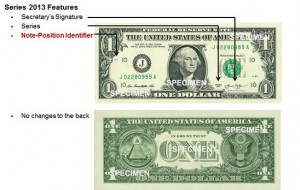
Changes to the Series 2013 $1 Note
For most of the 21st century, many groups have advocated for eliminating the $1 bill, while others provide a counterpoint to maintain the status quo. While the discussion of eliminating the note has economic and policy concerns that lawmakers must address, how would the U.S. government implement the policy?
The Federal Reserve Act of 1918 gives the Federal Reserve the authority to procure, distribute, and manage the nation’s currency supply. They must procure the paper money from the Treasury Department, but the Federal Reserve is required to tell Treasury how much money they need to print. But does the Fed determine which notes to print?
The law (12 U.S. Code § 418) says that the Treasury Department prints notes in “the denominations of $1, $2, $5, $10, $20, $50, $100, $500, $1,000, $5,000, $10,000 as may be required to supply the Federal Reserve banks.” The statement suggests that the Federal Reserve banks set the printing requirements. Does this mean that the Federal Reserve banks can tell Treasury that it no longer requires them to print the $1 note?
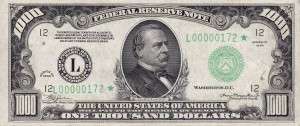
Series 1934 $1000 Federal Reserve Note
Although the denominations remain part of the law, the Federal Reserve Act gives the Federal Reserve latitude to manage the currency supply as it deems necessary. It was a policy enacted by the Treasury and Federal Reserve in tandem.
The agreement was not as easy as the history books want us to believe. In 1969, William McChesney “Bill” Martin was the Federal Reserve Chair. Martin was appointed by Harry S. Truman in 1951, fiercely guarded the Federal Reserve’s independence, and was known to push back against presidential policies with a minimalist approach to managing market factors. In the 1960s, Martin ran afoul of Lyndon Johnson and Richard Nixon for not doing more to help prevent a recession.
Following a meeting with Nixon in October 1969 about what his administration saw as an impending recession, Nixon announced that he would replace Martin when the Federal Reserve chair’s term expired on January 31, 1970.
It was not the first time the Federal Reserve changed United State currency without legislation. Since the formation of the Federal Reserve, the Federal Reserve authorized the printing of gold certificates, silver certificates, Legal Tender notes, Federal Reserve Banknotes, and the ongoing Federal Reserve Notes.
Before the formation of the Federal Reserve, the Treasury Department determined what currency to print and its design. Treasury Secretary Franklin MacVeagh proposed reducing the size of the currency paper in 1909. After years of study and discussion, Secretary Andrew Mellon approved new smaller designs issued in 1929. The change did not require new legislation.
Based on history, Treasury Secretary Janet Yellen and Chairman of the Federal Reserve Jerome Powell can decide to withdraw the $1 Federal Reserve Note from circulation. Powell can instruct the Federal Reserve Banks to stop issuing $1 bills and use the $1 coin instead. When the notes return to the Federal Reserve System, they can withdraw the notes and destroy them as they do with old currency.
Yellen can refuse by saying that she is following her boss’s policies, the President of the United States. But the Federal Reserve is an independent agency and does not have to ask for permission. By law, if the Federal Reserve does not order the printing of new $1 bills, the Bureau of Engraving and Printing will not print new currency.
Politics may prevent Yellen and Powell from making this decision, but they can do it and allow the United States to join the rest of the civilized world that no longer carries its unit currency in paper form.
May 25, 2022 | currency, Federal Reserve, policy
 Would ending the circulation of the $100 Federal Reserve Note force the Russian people to pressure Putin over his Ukraine attack?
Would ending the circulation of the $100 Federal Reserve Note force the Russian people to pressure Putin over his Ukraine attack?
According to an opinion piece published in the Wall Street Journal by Markos Kounalakis (sorry, it’s behind a paywall), the sanctions on Russia are not reaching their people. Kounalakis believes that the United States should stop circulating the $100 bill to reach the people.
The United States dollar is the world’s reserve currency, and it is used as a safe store of wealth by people and companies. The Euro may represent an easily transactional currency, but the dollar is where the world turns for a store of wealth. In Russia, where the banks are not trusted, average citizens keep their savings in dollars.
According to the Federal Reserve, more than 661,500 pounds of $100 bills are in Russia as of 2019. Russians are stuffing them in a mattress and not using them for commerce.
Removing large-denomination currency from circulation is not new. In 1969, the Treasury withdrew the $500 and $1000 notes from circulation to make it more challenging for drug traffickers to move large amounts of cash.
In 2016, some economists made a case to stop circulating the $100 bill and the €500 banknote, even claiming the €500 note was nicknamed the “Bin Laden.” Eventually, the European Central Bank (ECB) stopped circulating the €500 banknote in 2018. But that has not stopped their use by criminals since the ECB has not demonetized the notes.
Even if the United States wanted to stop the circulation of $100 notes in Russia, it would not be an easy process. First, who would have the authority to make this determination? According to the Federal Reserve Act of 1918, it is the Federal Reserve’s job to manage circulating currency independently. The law that created the Office of the Comptroller of the Currency (OCC) allows this Treasury bureau to oversee the mechanisms that go into currency movement.
The government has more latitude over managing currency than coins. The law requires the U.S. Mint to strike cents, 5-cents, dimes, quarter dollars, half-dollars, and dollar coins (31 U.S. Code § 5111). On the other hand, the law (12 U.S. Code § 418) sets the denomination types, but it does not require the Federal Reserve to circulate all denominations.
If the President decides that it is in the best interest of U.S. foreign policy to stop the circulation of $100 notes, the Federal Reserve must decide if it is in the best interest of the Federal Reserve System to do so. However, the law complicates the matter by having the OCC oversee the institutions managing the currency. The blurry line between the authority of the Treasury Department and the independence of the Federal Reserve could create tension.
Should the policy regarding issuing $100 Federal Reserve Notes change, currency collectors may find opportunities to collect $100 notes.
May 1, 2022 | BEP, currency, news
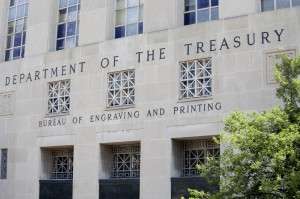 The Bureau of Engraving and Printing announced that they negotiated a transfer of land from the U.S. Department of Agriculture to build a new facility in the Maryland suburbs of Washington, D.C.
The Bureau of Engraving and Printing announced that they negotiated a transfer of land from the U.S. Department of Agriculture to build a new facility in the Maryland suburbs of Washington, D.C.
The USDA will transfer the 104-acre Beltsville Agricultural Research Center northwest of the Capital Beltway for the new printing facility. The BEP plans to begin construction in 2023 and complete the facility by 2027. The new printing facility will employ at least 850 people.
The BEP used to be the security printer for the United States government. The BEP printed security documents, including bonds and deed certificates, and stamps, other than printing currency.
Legally, the primary mission of the BEP is to print currency for the Federal Reserve. They would offer other printing services as long as they continued to supply the Fed with currency. Beginning in the 1970s, the BEP reduced the number of stamps they printed until ending stamp printing in the early 1990s. When the Treasury ended the Series E savings bond program, they contracted printing to other contractors.
The economic expansion of the 1980s led the BEP to end almost all security printing to print currency. Before opening the Fort Worth printing center in 1991, Treasury officials explored using commercial printers to supplement the BEP’s capabilities.
In 2022, the Federal Reserve ordered the printing of over 6.9 billion notes. Although this is less than last year’s order, the BEP is approaching its maximum capacity between the Washington and Fort Worth sites. And even though bonds and stamps have become electronic assets, the U.S. government still has a security printing requirement. Although a source at the BEP would not elaborate on the printing requirement, they said that government officials want to make security printing a government function.
And now the news…

April 27, 2022
It will house a new state-of-the-art and environmentally conscious production facility to print U.S. paper currency and other federal security products.

→ Read more at
nbcwashington.com

April 30, 2022
COIN collecting was once a hobby for Stephanie Sabin – now she lives her dream by steering the ship for a major grading service firm. Mrs Sabin, who is the president of Professional Coin Grading Services (PCGS), has been into collecting since she was a child thanks to her family’s numismatic background.

→ Read more at
the-sun.com
Mar 20, 2022 | counterfeit, currency, news

An example of a $100 Federal Reserve Note printed on a bleached $5 note (Image courtesy of Prescott Police Department via AOL.com)
Hollis Forteau, 38, of New Jersey, was convicted on two counts of counterfeiting in 2015 for bleaching low denomination notes, printing $100 on the blank paper, and passing them as real currency. Since most people continue to use iodine pens to detect counterfeit currency, the counterfeit notes will pass the test.
Professional counterfeiters know it is easy to pass bleached currency. Rather than understanding the embedded security features of real currency, stores continue to rely on technology that the criminals know how to defeat.
Although the counterfeiter is convicted, the damage will affect the businesses he scammed and their customers. The businesses do not get compensated for the lost revenue for each counterfeit note, and those businesses will have to recover the lost revenue by raising prices. Nowadays, with inflation increasing, the business can bury the rise in inflation concerns.
The consumers end up paying for these cases.
Businesses should be encouraged to train their employees to recognize the anticounterfeiting embedded into United States currency by the Bureau of Engraving and Printing.
And now the news…

March 14, 2022
The Central Bank of Argentina has ceased minting new coins, according to media reports. Rising metals prices have made the coins too costly to produce.

→ Read more at
centralbanking.com

March 15, 2022
A New Jersey man was sentenced to five years in prison after creating counterfeit money with bleach, $1 bills and a printer, officials said. Fake $100’s were made.

→ Read more at
miamiherald.com

March 16, 2022
The rare gold coin has been on display at the British Museum on long-term loan from a private collector.

→ Read more at
foxbusiness.com

March 18, 2022
The Ukraine crisis has shaken up prices—and sent some Americans scrambling for coins.

→ Read more at
theatlantic.com

March 19, 2022
Do you know that Sheikh Noor ud Din and Sheikh Humza Makhdoom have also been mentioned in the numismatic records of this land?

→ Read more at
greaterkashmir.com
Oct 28, 2021 | currency

Reverse of the $1 Silver Certificate Short Snorter
A short snorter is a banknote signed by people meeting or traveling together. Although the practice is said to have started in 1925 by Alaskan bush pilots, it became popular during World War II. Soldiers would have a banknote, usually a $1 bill, and have people they meet sign the note. Some soldiers used local currencies to remember where they met the people who signed the notes.
Short snorters are interesting. There is a story behind every note. Even if you do not know who the signatures belong to, it is interesting to think about their stories. If that is not enough, to have a short snorter on a Hawaii overprint note makes it very interesting.
Following the attack on Pearl Harbor, the Treasury and the Federal Reserve issued notes with HAWAII on the front and overprinted on the back. The notes were issued so that if Japan invaded Hawaii, the government could remove their legal tender status, making them worthless.
Treasury issued the $1 silver certificate in June 1942. Later, the Federal Reserve issued $5, $10, and $20 Federal Reserve Notes. By August 1942, there were enough notes that the military ordered residents to exchange old currency for the new Hawaii overprint notes.
The U.S. government recalled Hawaii overprint notes in April 1946. Locals continued to use them for a few years since they retained their legal tender status. Some notes survived as souvenirs.

$1 Silver Certificate with the Hawaii overprint used as a short snorter.
The note I purchased from LKCA has four signatures that have faded with time. The handwriting is not legible, making it challenging to make out the names. Who were these guys?
Since the notes were first issued in 1942, withdrawn in 1946, and VJ Day is August 15, 1945, it gives us the period and location for this meeting. Unless someone can read the handwriting, that is all we know.
Was this the souvenir of a last drink by four soldiers before being discharged after the war? Maybe it was their last meeting before a battle or after surviving whatever the Japanese tried to throw at them. Or was it an acknowledgment of friendship?
The note was likely found by a relative of a deceased World War II veteran who put it back in collector circulation. Its story passed along with that veteran. On its current stop in the collecting continuum, I am honored to hold a piece of their heroic history.
Jul 11, 2021 | coins, counterfeit, currency

From 2019: An example of a $100 Federal Reserve Note printed on a bleached $5 note (Image courtesy of Prescott Police Department via AOL.com)
Stories that do not appear on the front page of the printed edition or the top of a website rarely receive the attention of the headline writers. Unless there is a murder or other major crime, most local crime stories do not earn over-the-top headlines. This week’s news has three examples of mundane headlines that display a concerning pattern about counterfeit coins and currency.
Counterfeit money has been a problem since its invention. Governments try to stop criminals from counterfeiting, but their efforts almost seem inevitable. The new trend appears to be the small-time criminals caught trying to make money from selling fake money to survive.
Recent stories about the arrest of counterfeiters report that the people are not career criminals trying to get rich. Those who are getting arrested are using the counterfeits for survival. The world economy has deteriorated to the point that buying and selling counterfeit money was worth the risk to buy a scooter to use as primary transportation.
The people caught passing counterfeit money admit it is not a mistake. In the statements to the police, they admit to using counterfeits to fill to earn a survivable living. Authorities continue to look for the distributors of the counterfeits.
And now the news…

July 4, 2021
An extremely rare 22-carat gold coin from the reign of Henry VIII, considered the origin of the pound, is set to go under the hammer this month for £50,000.

→ Read more at
dailymail.co.uk

July 7, 2021
In a major crackdown against the illegal counterfeit currency trade going on in the city, the district police arrested six persons and seized Rs1.47 lakh fake notes in denominations of Rs2,000 and Rs500.

→ Read more at
tribuneindia.com

July 7, 2021
ST. LOUIS, Mo. – Have you ever gone to the zoo or a museum and received a stretched coin as a souvenir? Well, the “The King of Elongated Coins” from the 1904 World’s Fair is up for auction and the lot including two other coins could be worth up to $4,000.

→ Read more at
fox2now.com

July 8, 2021
A team of French, Australian, and Israeli scientists has collected evidence proving there was an active and thriving silver trade network in the eastern Mediterranean region in the Late Bronze Age and Iron Age (approximately 1200 BC to 400 BC).

→ Read more at
ancient-origins.net

July 8, 2021
The Niger State Police Command has arrested a Catholic Church Catechist and two others for engaging in the sale of counterfeit currency of about N15,800,000. The trio of Emmanuel Akazuwa, 42, Catechist Sabastine Dabu, 48 and Umar Mohammed, 50, were arrested in a hotel in the Kontagora area of the state while trying to get a buyer for the N15.8million in their possession.

→ Read more at
saharareporters.com

July 9, 2021
Officers seized approximately $1,700 in counterfeit currency during an arrest on Thursday, July 8, 2021.

→ Read more at
sootoday.com

July 9, 2021
Byzantine coins were discovered last month at the port of Caesarea, a town in Northern Israel between Tel Aviv and Haifa.

→ Read more at
greekreporter.com
If you like what you read, share, and show your support 
Jan 26, 2021 | currency, news, policy
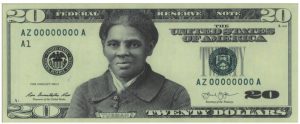 During a White House press briefing, the press secretary announced the “Treasury Department is taking steps to resume efforts to put Harriet Tubman on the front of the new $20 notes.”
During a White House press briefing, the press secretary announced the “Treasury Department is taking steps to resume efforts to put Harriet Tubman on the front of the new $20 notes.”
Creating the new $20 Federal Reserve Notes with a portrait of the abolitionist began in 2016 to have Tubman appear on the $20 note by 2020, the 100th Anniversary of the 19th Amendment. Although the Bureau of Engraving and Printing continued to work on the project, Treasury Secretary Steven Mnuchin eventually announced that a future administration would decide if having her portrait was appropriate. Mnuchin targeted 2030 as the earliest a new $20 note would appear.
Sources report that Mnuchin delayed the stoppage of the process as long as possible. He knew that the president did not support this change. After the announcement, sources report that the work continued without permission.
Although the source did not know the engraving status, it is speculated that the intaglio printing plates for the new $20 notes may be ready before the end of the year.
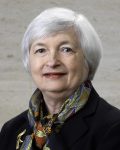 When the plates are ready, they will include the signature of Treasury Secretary Janet Yellen. The Senate approved Yellen’s appointment on an 84-15 vote. She will be the 78th Treasury Secretary and the first woman in that role in the department’s 232-year history.
When the plates are ready, they will include the signature of Treasury Secretary Janet Yellen. The Senate approved Yellen’s appointment on an 84-15 vote. She will be the 78th Treasury Secretary and the first woman in that role in the department’s 232-year history.
Previously, Yellen was the Chair of the Council of Economic Advisers under Clinton, President of the Federal Reserve of San Francisco, and served on the Federal Reserve Board of Governors before being appointed the Board’s chair 2014.
If you like what you read, share, and show your support 
Dec 15, 2020 | currency
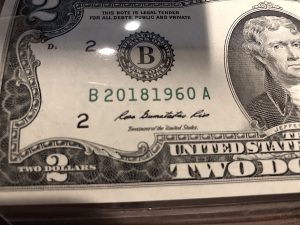
A $2 note from the BEP’s 100 Year Anniversary of the end of World War I. The 2018 part of the serial number was when it was issued and the 1960 was when I was born.
Fancy serial numbers on currency are when there is something special about the numbers. Although some third-party grading services recognize several different varieties, the generally recognized as collectible fancy serial numbers are:
- Binary Numbers: A serial number that contains only 0 and 1
- Ladders: Serial numbers that increase or decrease in order
- Low Numbers: Serial numbers from 1 through 9 are considered the most collectible
- Liar’s Poker: A game that uses the serial numbers in the currency as a poker hand. Each player uses their currency notes and bets who has the better hand. The better the hand, the more the serial number is worth
- Radars: Serial numbers that read the same backward and forwards like 12344321
- Repeaters: Serial numbers that repeat like 12121212 or 12341234
- Rotators: Serial numbers that can be read if you turn the note upside down. The only numbers in rotators are 0, 1, 6, 8, and 9
- Solid Numbers: Serial numbers that use all of the same numbers like 11111111
- Combinations: Any combination of the types, such as 101101 being a binary repeater.
There are other ways to collect serial numbers. One way would be to try to find your birthdate on the currency. For example, if you were born on July 4, 1976, you can look for the serial number 19760704 or 07041976. Some years may be challenging to find since the Bureau of Engraving and Printing has created premium collectibles using the year as the first four numbers of a serial number.
If you do not have a number that can be identified as one of these fancy numbers, does it have a “cool factor?” Grab your currency and go to the Fancy Serial Number Checker. Enter the 8-digit serial number and see what it says.
I found a $1 Federal Reserve Note with a serial number reading 82838374. The site told me that it was “so-so.” It was the best ration I found from the money in my pocket!
-
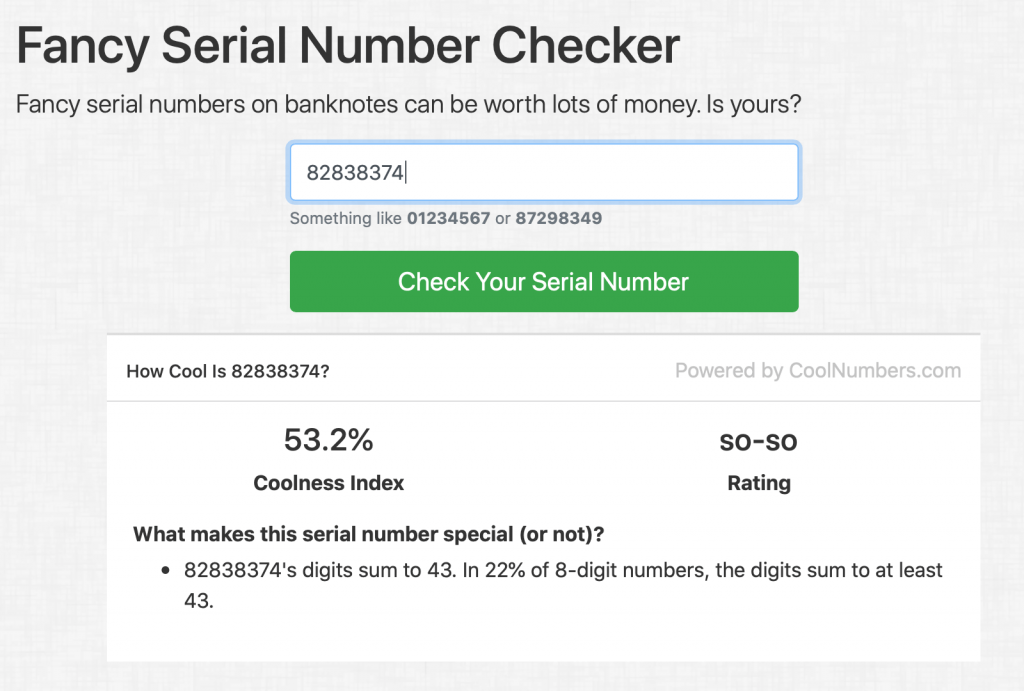
-
Fancy Serial Number check on a $1 note in my pocket
-
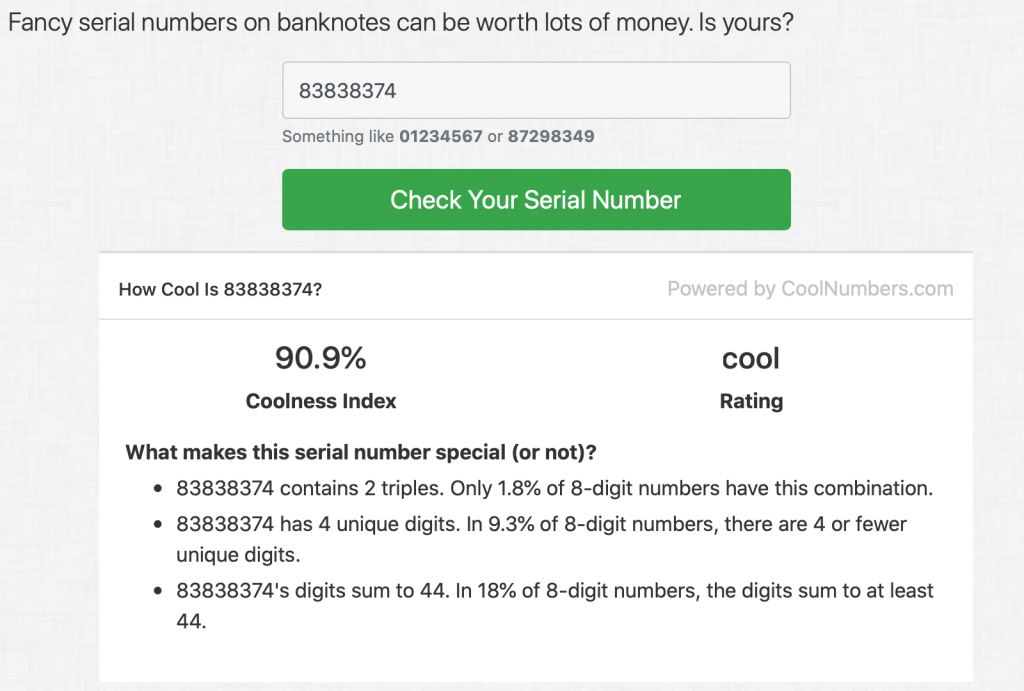
-
What if I changed one of the numbers and tried it again?
You can also play with the number. I was curious about what it would say if the first “2” in the serial number were a “3?” As I suspected, the serial number 83838374 is cool!
Depending on how much cash you have in your pocket, it will give you and your children something different to do!
If you like what you read, share, and show your support 
Dec 13, 2020 | currency, news
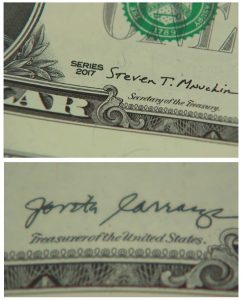
Treasury Secretary Steven T. Mnuchin and Treasurer Jovita Carranza signatures on the current Series 2017 Federal Reserve Notes
If confirmed by the Senate, Yellen will be the first woman to be appointed Treasury Secretary. It will also be the first time a woman’s signature appears on the Federal Reserve notes’ right side. For the left side where the Treasurer’s signature appears, women have held that office in every administration since Harry Truman appointed Georgia Neese Clark in 1949.
The transition team has not announced who will be the next Treasurer of the United States. Currently, the position has been vacant since January 2020. Jovita Carranza, the previous Treasurer, was appointed as Administrator of the Small Business Administration.
Just think, if Biden appoints a woman as Treasurer, there will be two women’s signatures on the Federal Reserve Notes.
Although there is no rule as to when the Bureau of Engraving and Printing changes the series of U.S. currency, recent history suggests that Yellen’s signature will first appear on Series 2021 notes. Even though the Bureau of Engraving and Printing will print billions of dollars in Federal Reserve Notes, it might be worth finding crisp notes with fancy serial numbers to put away for a while.
And now the news…

December 8, 2020
Recovering from a stroke, a businessman rekindles his childhood passion for coins and stamps and builds up a multi-million-dollar collection now on display in a tiny museum in Dubai

→ Read more at
thehindubusinessline.com

December 8, 2020
A hoard of 47 silver Roman coins and British Iron Age gold coins have been donated to a museum after being declared treasure.

→ Read more at
bbc.com

December 9, 2020
News LAPEL, Ind. — A man who lost his decades-old coin collection after shipping it to his son wants to warn other people to be careful mailing valuables this holiday season.

→ Read more at
cbs4indy.com
If you like what you read, share, and show your support 
Jun 23, 2020 | BEP, commentary, currency
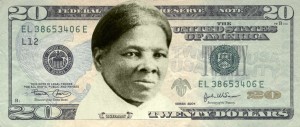
Mockup of the $20 note featuring Harriet Tubman
The Treasury Department said that the $10 note was next on its schedule to update the currency to add Advanced Counterfeit Deterrence (ACD). The ACD Steering Committee, an inter-agency group that monitors several factors that go into the maintenance of U.S. currency, suggested the change. The committee also wanted to add features that will help increase accessibility for the visually impaired as part of the court-mandated Meaningful Access Program. Treasury reports that the new note “will include a tactile feature that increases accessibility for the visually impaired.”
Others had recommended replacing the portrait of President Andrew Jackson on the $20 note with a woman. Aside from 20 being a significant number in this celebration, the groups targeted Jackson because of his history of wanton disregard for life and liberty. During the War of 1812, Jackson led U.S. Army troops against native tribes working with the British against the United States to regain the lands taken following the colonies’ independence. History records that Jackson’s troops were brutal against the native tribes on his orders, killing them rather than taking prisoners.
After beating back the British in the Battle of New Orleans, Jackson declared martial law in New Orleans and used his troops to enforce martial law. Jackson ordered his troops to arrest a local magistrate because he sided with a newspaper reporter who wrote negatively about Jackson’s rule. Jackson also had members of the local militia who sided with the British executed without trial.
As president, Jackson’s lobbied Congress passed the Indian Removal Act because he wanted the Native American tribes to relocate to the western side of the Mississippi River. Jackson disregarded the letter of the law and ratified treaties to uproot tribes and march them away. It was called “Trail of Tears.” It forced the relocation of Cherokee, Muscogee, Seminole, Chickasaw, and Choctaw nations from their ancestral homelands in the southeast to an area west of the Mississippi River. It is considered the most violent and brutal act against the native tribes in United States history.
To have Jackson’sJackson’s portrait on the United States currency is also a bit ironic. Jackson was against the concept of a central bank and refused to renew the charter of the Second Bank of the United States. He vetoed the bill to continue its charter. After winning the election in 1833, Jackson withdrew all of the country’s funds from the bank, limiting its ability to conduct business. He gave power to local banks to lend money and issued the Specie Circular, an executive order requiring government transactions in gold and silver coins (specie).
Although all of the men whose portraits appear on United States currency are very flawed people, Jackson is the worst.
Eventually, Secretary Lew sided with the activists and announced that Harriett Tubman would replace Jackson on the $20 Federal Reserve Note.
Lew resigned as the 76th Secretary of the Treasury on January 20, 2017, with the inauguration of a new administration. Steven T. Mnuchin became in as the 77th Secretary of the Treasury on February 13, 2017.
Mnuchin did not immediately interfere with the Bureau of Engraving and Printing’s efforts to redesign the $20 FRN. As the work continued, the BEP also continued to work on additional anti-counterfeiting measures for U.S. currency. Specifically, the BEP was looking into changes that would first impact the $10 note followed by the $5 bill.
The paper $5 note was a more significant focus for the BEP. In working with the U.S. Secret Service, they were finding that many counterfeiters were using bleaching products to remove the ink from the paper to use it to print higher denominations, predominantly $20 bills. One internal report suggested that the criminal would see a net gain of $14 for each $20 note they could produce.
Although it costs more to counterfeit $20 bills this way, it is a lower risk for the criminal. Few people pay attention to the problem, and those that do find that the currency passes the iodine pen test.
Interference from Mnuchin came after his first three months in office. It started with a question from a reporter who asked the president about the change. During a subsequent cabinet meeting, the president said something to Mnuchin about the change. Mnuchin agreed to do something without raising concerns.
Rather than stopping the process, Mnuchin diverted funds from the development of the proposed change in portrait. He was able to hide the change from the public because of the nature of the Treasury’s budgetary process.
In response to news reports, BEP Director Len Olijar issued the following statement via the bureau’s website saying that “BEP was never going to unveil a note design in 2020.” That was not the policy of the Treasury Department and the BEP when Secretary Lew announced the change.
Without interference from the current administration, Andrew Jackson, whose policies and actions led to the murder of many Native Americans, would have been replaced by Harriett Tubman. An honor to someone who saved lives and a tribute to 100 years of Women’s Suffrage.




 → Read more at
→ Read more at 










